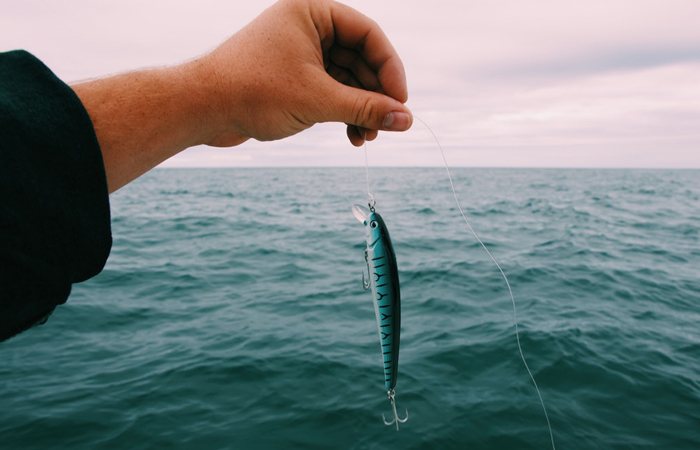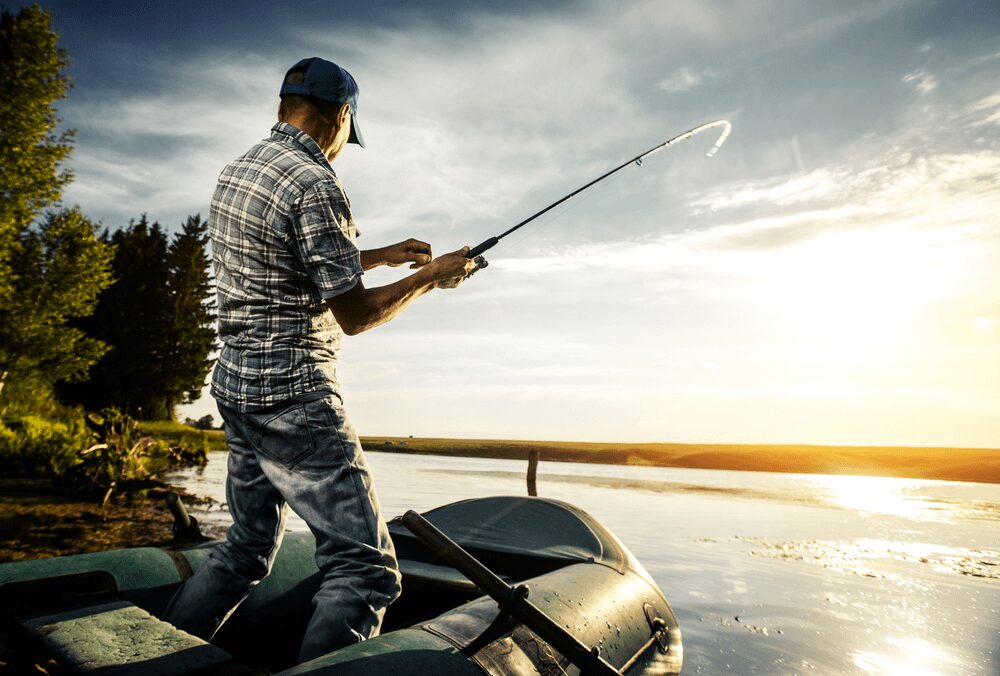Do you love to fish? Have you been trying to catch a catfish with little to no luck? Well, you are in luck. Below we have put together the top tips for learning how to catch catfish. Keep reading to learn more!
What Is the Best Rod and Reel to Use for Catching Catfish?
One of the biggest mistakes amateurs make when learning how to catch catfish is using the wrong rod and reel. What you want to use to catch catfish is a heavy-duty rod; we recommend using one that is at least 6 or 7 feet long. Make sure that the rod you choose is made of fiberglass for the most durable and most comfortable fishing rod.
If there’s one thing we stress above all else, when it comes to choosing a rod for catching catfish, it’s making sure the rod can hold a significant amount of weight. We’ve all heard the tales about catfish the size Volkswagen Bug’s and while they may not be that large, they can be an impressively sizeable fish. We suggest at least a 15-pound monofilament and a line that can take up to 80 pounds of weight.
Tip: Sinkers
Not sure what type of sinker to use on your rod? We have found that when learning how to catch catfish, that using heavier sinkers, in the 2 to 10-ounce size, is the best method. In terms of bait, we always like to use fresh pieces of cut bait.
Is There a Need for a Specific Type of Bait?

If you know a thing or two about catfish, then you know that there isn’t a lot they won’t eat. Trying to find the right type of bait is essential to learning how to catch catfish successfully. To start, you’ll want to toss all of the preconceived notions you have about catfish away. Many seasoned professionals claim catfish are detritus feeders only meaning they will just like bait that has already begun to decay.
The reality of catfish diets is that they are surprisingly diverse; catfish enjoy many different types of prey. If you aren’t having any luck using your current bait, we recommend chicken liver, shad, or bluegill. If you are fishing in the spring or early summer, you can even try live bait!
Keep Trying
It can be tempting to quit after trying many different forms of bait so be prepared to try out a few. Once the catfish start biting, you’ll know which bait works best! Let the catfish tell you which bait to use by bringing as many different types as possible!
Top 10 Best Tips for Learning How to Catch Catfish

Tip One: Ask Around
One of the top tips for catching catfish is to ask around. It may seem elementary but asking local fishers where they’ve seen catfish is a surefire way to increase your odds of catching one. Catfish like to congregate in the same locations, frequently, so it is a good idea to keep track of places where a lot of catfish are located.
If you can’t find any local fishermen to ask just try stopping by the nearest bait shop. Bait shops are not only full of knowledgeable employees but you can probably find anglers shopping around as well. Don’t be afraid to ask strangers and be sure to return the favor when anyone comes up to ask you tips on the area’s best fishing spots.
Tip Two: Map It Out
Using a map may seem like overkill, but if you want to know how to catch catfish, you’ll want to use a map. Maps are a great way to utilize any knowledge you have picked up from locals. Make notes about which areas catfish have been seen most frequently and in high numbers.
If you want to take things up a notch, you can use Google Earth to make better notes on your map. Google Earth allows you to take a look at the satellite image of the map to scope out deep holes in local rivers. Catfish are always bound to be found in the deepest and darkest holes that rivers can provide.
Tip Three: Make a Plan
Another common misconception about catching catfish is that they are slow and lazy creatures. Nothing could be farther from the truth. Catfish are active creatures, especially at night, and won’t always be able to be found at the bottom of any old hole. Take a critical look at the location you are fishing in. Make a note of holes, seams in the current near holes, and hiding spots that would be of interest to a catfish. By making educated assumptions based on your surroundings and the type of catfish you are looking to catch will only further increase your success rate.
Tip Four: Go at Night

Fishing at night may seem like a bad idea when learning how to catch catfish but, believe it or not, catfish are the most active at night. Catfish are awake during the dark hours of the night because that is the time they like to sneak up on sleeping prey. Expect to have a better chance of catching catfish at night as they try to find their dinner.
Tip Five: Spread Out
If you are desperate to learn how to catch a catfish successfully, you will want to use multiple rods. That’s right; using more than one rod will increase your chances of a bite. We recommend using upwards of 10 different fishing lines, on rods, out with bait on them at the same time. Just make sure that you can pay attention to each line to watch for any movement.
Tip Six: Bottom Dwellers
As you may or may not know, catfish are bottom dwellers. If you want to learn how to catch catfish, you’ll want to play to their senses. Catfish love smelly bait, and when you try to entice them near the river bed floor, you’ll have a harder time getting a bite. You will always want to work on getting catfish up, and out of any holes they may be dwelling in.
We recommend changing up your bobbers to leave a stronger scent trail above the river floor. You can also try floating jig heads and inline floats to diffuse the scent for a longer length of time. If that still doesn’t do the trick, try using live bait to trigger natural instincts!
Tip Seven: Don’t Wait
Have you had daydreams of casting out your line, opening up a beer, and waiting hours for a first bite? Well, if you are looking to play the long game then learning how to catch catfish may not be for you. When fishing for catfish, you will want to learn that if you’ve been sitting in the same spot for over twenty minutes, you’ll likely want to move.
Moving more often will increase your chances of catching a catfish. Most people are too afraid to move locations, and that often cuts their chances of catching a fish in half. Make a note of the type of catfish you are looking to catch; for example, most types of catfish are quick biters meaning if you haven’t had any bites or movement in a while your best bet is to move.
Tip Eight: Avoid Cuts
Many fishermen warn beginners about getting stung by catfish when in all actuality, catfish do not sting. If you have heard of someone getting a sting by a catfish they were most likely cut by a small and sharp fin. Catfish have fins that can penetrate human skin and cause a burning or stinging sensation. It is important to note that although the sensation may be a sting, catfish do not have stingers.
If you get cut by a fin from a catfish, there are a couple of things you can do to dull the pain. Our foolproof method of alleviating a catfish cut is to rub the wound over the belly of the fish. As unpleasant as it may sound, the slime from the catfish will help dull any sensation in your wound.
Tip Nine: Types of Catfish
If you go out to fish with seasoned experts and you tell them you’re fishing for catfish, they are bound to ask you some followup questions. To start, there are 3 different types of catfish that are most commonly fished for both sport and food; those are as follows:
- Blue catfish
- Channel catfish
- Flathead catfish
It is essential to know the difference between each species before you learn how to catch catfish. For example, channel catfish are the easiest to learn to catch whereas flatheads can be much trickier. Knowing what type of fish you are trying to catch will help you cater to techniques and fishing styles to have the most success.
Tip Ten: Keep What You Eat
The last tip on our list is only to keep the amount of fish that you are going to eat. Once you’ve successfully learned how to catch catfish, you will want to use your newfound skills sparingly. It is a lot easier than most people think to exhaust a resource in a river. Catfish are not an inexhaustible breed and therefore should only be removed as needed.
If you make a trophy worthy catch, consider throwing the fish back in the river. You can always commemorate large catches with photographs. After all, the key is to always make sure you are leaving enough catfish to continue to adequately reproduce for future generations.
Conclusion
Catching a catfish can be easy. Once you know precisely which type of catfish you are looking to hook you can start compiling your research on how to catch one. Remember that it is always okay to ask locals or other fishers for help or suggestions along the way. Best of luck and happy fishing!